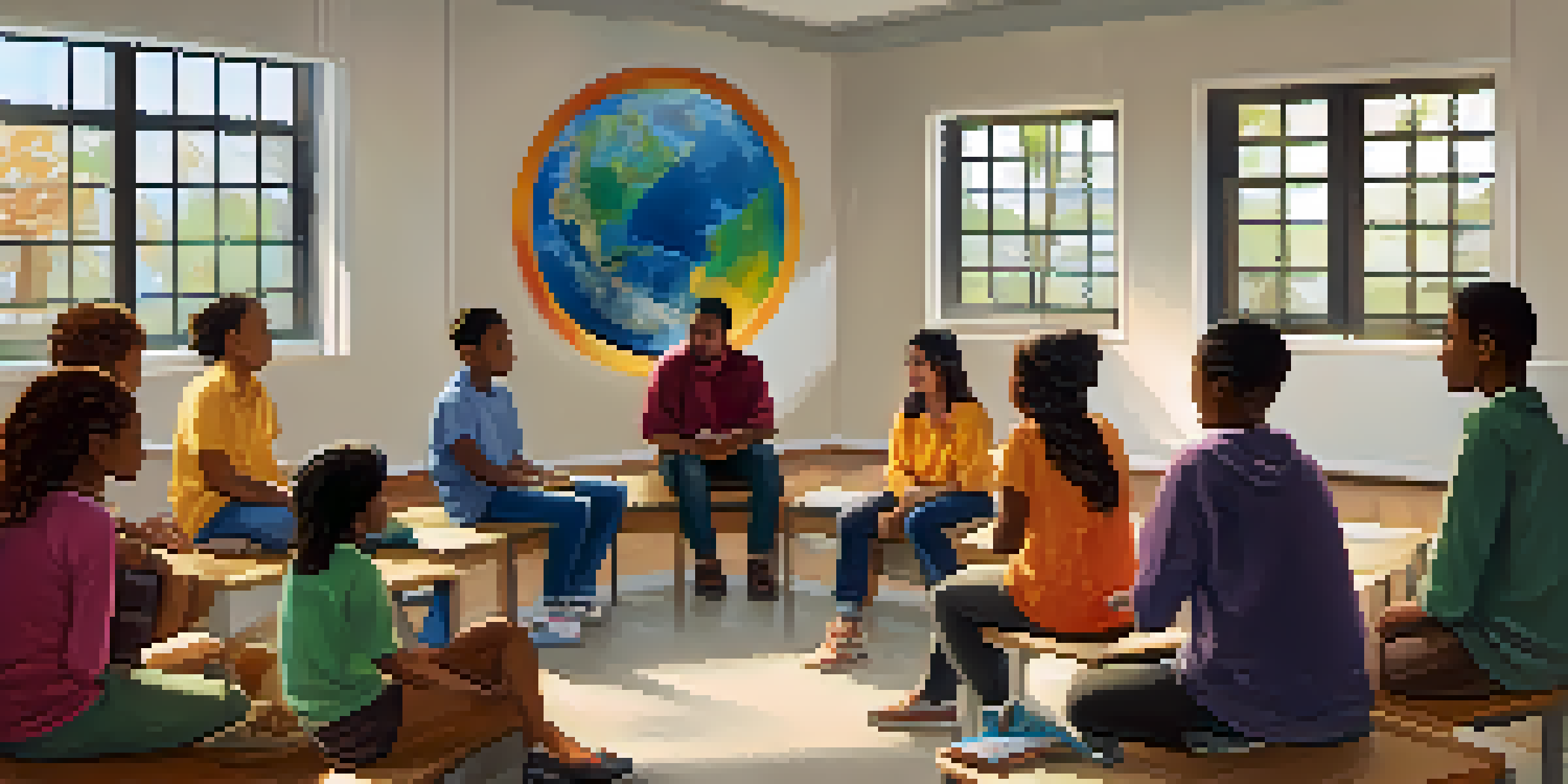Cultural Sensitivity in Teaching Spiritual Practices Ethically

Understanding Cultural Sensitivity in Spiritual Contexts
Cultural sensitivity is crucial when teaching spiritual practices, as it helps to honor diverse beliefs and traditions. It's about recognizing that each culture has its unique context and values surrounding spirituality. Acknowledging these differences fosters respect and understanding, which are essential for creating a safe learning environment.
Cultural sensitivity is not about being politically correct; it's about understanding and respecting the beliefs and practices of others.
When educators approach spiritual teachings without cultural sensitivity, they risk misinterpretation and disrespect. For example, incorporating elements from a particular tradition without understanding its significance can lead to cultural appropriation, which diminishes the practice's value. Thus, educators must be well-informed and considerate of the cultural roots of the practices they teach.
Incorporating cultural sensitivity not only benefits students from diverse backgrounds but also enriches the learning experience for everyone involved. By embracing varied spiritual perspectives, educators can cultivate a more inclusive classroom atmosphere, encouraging open dialogue and mutual respect.
The Importance of Ethical Teaching Practices
Ethical teaching practices are essential in any educational setting, especially when it comes to spirituality. Educators must ensure that they present spiritual practices in an honest and respectful manner, avoiding sensationalism or superficial engagement. This commitment to ethics helps students feel secure and valued in their explorations.

For instance, educators should strive to provide historical and cultural context when teaching spiritual practices. This approach not only enhances students' understanding but also respects the traditions from which these practices originate. Teaching ethically means being transparent about one's own biases and limitations while being open to learning from students' experiences.
Cultural Sensitivity is Essential
Recognizing and respecting diverse spiritual beliefs fosters a safe and inclusive learning environment.
Moreover, ethical teaching emphasizes the importance of informed consent. Students should feel empowered to engage with spiritual practices at their own pace and comfort level, ensuring that the learning process is personal and meaningful.
Building Relationships with Cultural Communities
Building relationships with cultural communities is a foundational aspect of teaching spiritual practices ethically. Engaging with these communities allows educators to gain deeper insights into the beliefs and practices they intend to teach, fostering authenticity in their approach. These relationships can also provide valuable resources and support for both educators and students.
Education is the most powerful weapon which you can use to change the world.
For example, collaborating with local spiritual leaders or cultural practitioners can enhance the curriculum and create a richer learning experience. By inviting guest speakers or organizing community events, educators can bridge the gap between academic knowledge and lived experiences. This not only benefits students but also honors the source communities.
Ultimately, fostering these connections promotes a sense of belonging and respect among students. It encourages them to appreciate the richness of diverse spiritual practices while recognizing their own unique journeys.
Adapting Teaching Methods for Diverse Learners
Adapting teaching methods to accommodate diverse learners is essential for effective spiritual education. Each student comes with their own background, beliefs, and experiences, which can influence how they engage with spiritual practices. Educators should be flexible in their approaches to meet students where they are on their spiritual journeys.
For instance, incorporating various teaching styles—such as visual aids, storytelling, and experiential learning—can cater to different learning preferences. Providing options for students to explore spiritual practices through meditation, group discussions, or personal reflection allows them to connect in ways that resonate with their individual paths. This flexibility helps create a more inclusive classroom environment.
Ethical Teaching Builds Trust
Presenting spiritual practices honestly and transparently empowers students and enhances their learning experience.
Additionally, being open to feedback from students can guide educators in refining their methods. By encouraging dialogue and discussion about what works best for students, educators can foster a collaborative learning atmosphere that respects each learner's unique perspective.
Recognizing and Addressing Power Dynamics
Recognizing and addressing power dynamics is crucial in the context of teaching spiritual practices. Educators often hold a position of authority, which can inadvertently influence the way students relate to the material. It's vital for educators to be aware of their influence and to create a space where all voices are valued equally.
For example, educators should encourage students to share their own spiritual experiences and beliefs, fostering a sense of shared ownership of the learning process. This approach helps to dismantle hierarchical structures often present in traditional education settings, promoting a more egalitarian classroom atmosphere. Students should feel empowered to express themselves without fear of judgment.
Additionally, educators should be vigilant about how cultural biases can affect power dynamics. By actively seeking to understand and mitigate these biases, educators can create a more equitable space for spiritual exploration, allowing all students to engage fully and authentically.
Promoting Open Dialogue and Critical Thinking
Promoting open dialogue and critical thinking is essential for fostering a healthy learning environment around spiritual practices. Encouraging students to engage in discussions about their beliefs helps them develop a deeper understanding of different perspectives. A classroom that values curiosity and inquiry can lead to meaningful explorations of spirituality.
For instance, educators can facilitate discussions by posing thought-provoking questions that encourage students to reflect on their own beliefs and the beliefs of others. This not only helps students articulate their thoughts but also promotes empathy and understanding of diverse viewpoints. Such conversations can be transformative, allowing students to grow in their spiritual journeys.
Personal Reflection Encourages Growth
Facilitating opportunities for self-reflection allows students to connect deeply with their spirituality and promotes personal development.
Moreover, critical thinking skills enable students to analyze and evaluate spiritual teachings rather than accept them at face value. This approach empowers students to navigate the complexities of spirituality with discernment, fostering a more profound respect for the practices they encounter.
Encouraging Personal Reflection and Growth
Encouraging personal reflection and growth is a key aspect of teaching spiritual practices. Spirituality is deeply personal, and educators should create opportunities for students to explore their inner thoughts and feelings. This could be through journaling, meditation, or guided reflection exercises, allowing students to connect with their spirituality on a deeper level.
For instance, educators might incorporate reflective prompts that encourage students to consider how their beliefs shape their values and actions. By inviting students to share their reflections in a supportive environment, educators can help cultivate a sense of community and trust. This environment fosters personal growth and self-discovery.

Ultimately, personal reflection empowers students to take ownership of their spiritual journeys. It encourages them to explore their beliefs thoughtfully and to understand the broader implications of their spiritual practices in their lives and communities.